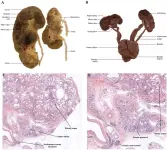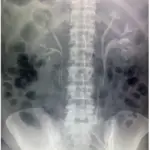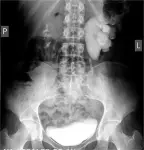Bifid ureters is a congenital renal tract abnormality due to some error or disturbance during development. It is an example of incomplete duplication of the urinary collecting system.
What is the Pathology of Bifid Ureters?
The pathology of bifid ureters is:
-Etiology: The cause of bifid ureters is the development of two ureteric buds.
-Genes involved: ERK/MAPK.
-Pathogenesis: The sequence of events that lead to bifid ureters includes the development when the ureteric bud divides in the lower third of its course. The bifid ureter has resulted from the early division of the metanephric diverticulum; the duplication can be total, double ureter, or partial, bifid ureter.
-Morphology: The morphology associated with bifid ureters shows extrarenal traject of the two ureters which may be near parallel, one beside the other or maybe slightly apart at the top, with the convergent route to their confluence level.
-Histology: The histology associated with bifid ureters shows a thick, fibroelastic, lamina propria lies underneath the epithelium.
How does Bifid Ureters Present?
Patients with bifid ureters typically affect females more than males presenting in early childhood. The symptoms, features, and clinical findings associated with bifid ureters include frequent urinary tract infection, uretero ureteral reflux, ureteric stenosis, urinary lithiasis, and pyelonephritis, non-functioning of kidney units.
How are Bifid Ureters Diagnosed?
Intravenous urography is usually used to diagnose bifid ureters.
How is Bifid Ureters Treated?
The bifid ureter is treated with ureteroureterostomy.
What is the Prognosis of Bifid Ureters?
The prognosis of Bifid ureters is excellent with appropriate management.



